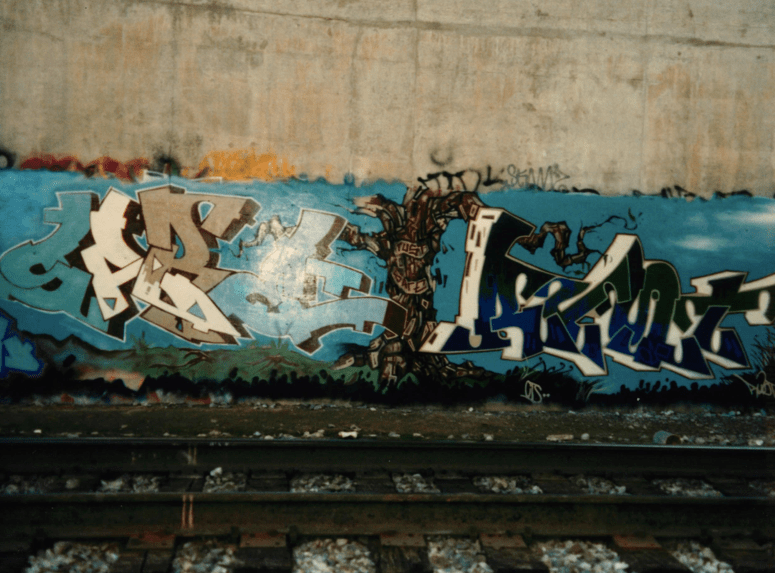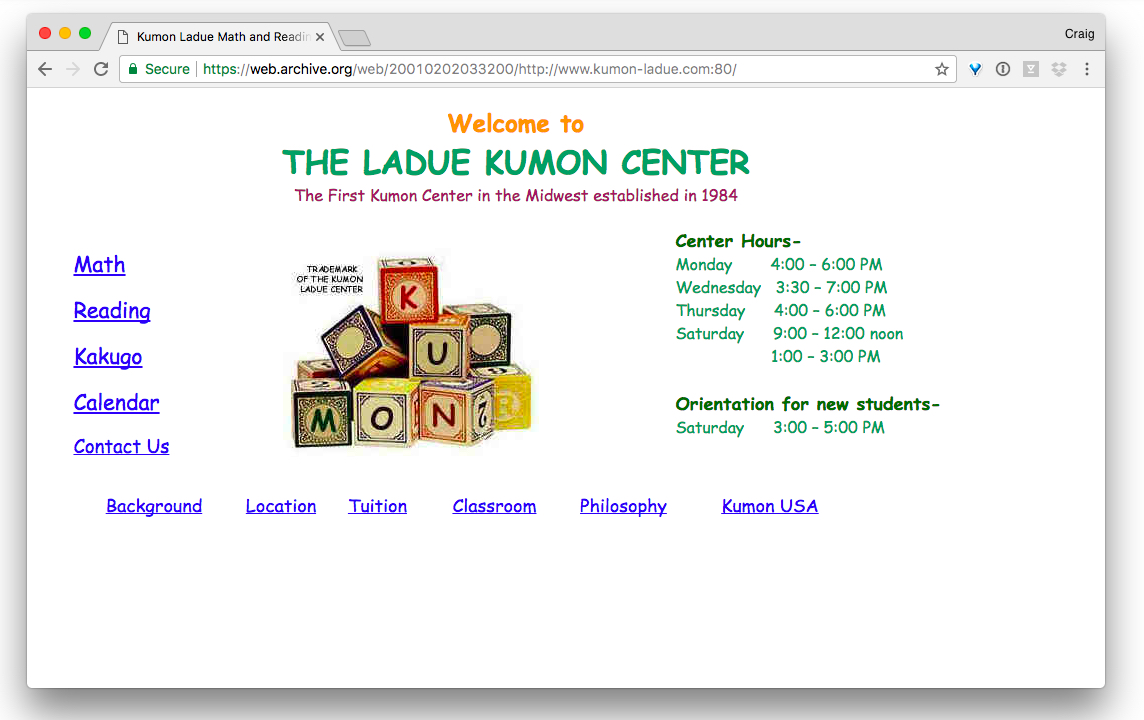How Graffiti Got Me Into Tech
Morgan Housel and I recently recorded a conversation about our early careers. Here’s a short story about how I got into technology.
I got into graffiti art in high school. Some of my friends roped me into it. They got into it, and it was fun. We were sneaking out, sneaking around, riding our bikes. But then it got boring for most of them. It was a fad. It was like “oh, what’s the next cool thing?” Some of us got cars, or got interested in girlfriends or other hobbies. So life just changed.
Graffiti art came and went for pretty much all of my friends. But for me, it awakened me in a way that I never felt before. I became super interested and passionate about it.
Screenshot of a mural along the redline metro train outside of Washington D.C., painted by Sare & Rust: The D.C. area went through a renaissance of graffiti art in the mid ’90s. A bunch of talented graffiti artists from New York and other parts of the country arrived to attend the Corcoran School of Art. All of a sudden there was a burst of color in the D.C. area from these talented graffiti artists that had migrated for school. They inspired a whole young class of high school kids like me that saw these incredible murals and rooftops and other cool stuff.
The D.C. area went through a renaissance of graffiti art in the mid ’90s. A bunch of talented graffiti artists from New York and other parts of the country arrived to attend the Corcoran School of Art. All of a sudden there was a burst of color in the D.C. area from these talented graffiti artists that had migrated for school. They inspired a whole young class of high school kids like me that saw these incredible murals and rooftops and other cool stuff.
That changed my life. In a roundabout way, it was the first thing that pushed me into technology.
My parents had a computer. I would go explore the city taking pictures of all this graffiti art, and then I would develop the film. Then I would scan all these photos into our home scanner, and the technology at that time would leave you with high-resolution images. But the file sizes were gigantic. My parents complained, “Why is the computer so damn slow?” And it’s because I was storing like 20 pictures of graffiti art. I had to figure out something else. I think I was patient zero for Iomega’s Zip Drive, which stored 100 megs per disk. The founders actually sent me a letter saying, “Thank you so much for buying our product. We weren’t sure that anybody had a use for this.”
Fast forward to college. There was a graffiti website called ArtCrimes.org. I was excited because at Wash U, the dorm rooms had high-speed internet access. I would rush home from class and look at ArtCrimes.org every day. I was obsessed. Imagine Wikipedia but for graffiti art, so if you and I were in Washington D.C., we’d take pictures of graffiti art and we’d send the photos to the Art Crimes webmaster. Anyone could contribute. The webmaster would upload like once a week, so I’d be refreshing constantly, waiting.
That’s kind of what led me into technology. I started thinking about processor speeds and internet access and high-speed access.
In one of my computer science courses, the professor ran the local chapter of the Kumon Math and Reading Center. Kumon is basically a franchise method of teaching children how to learn. So as my class project I built a website for the Kumon Math and Reading Center in Ladue, Missouri. It was so much fun. I built the website from scratch and figured out the hosting and the design and the UX.
Screenshot from the Internet Archive: It was clear that technology was changing things. Learning technology, and how to build web pages, became a passion.
It was clear that technology was changing things. Learning technology, and how to build web pages, became a passion.
When I graduated from Wash U, I created an online resume. Instead of creating a typical CV in a Microsoft Word doc, I built a website and I used an animated GIF of Nicholas Negroponte’s Being Digital logo. It was so cheesy, but I just kind of hacked it together. And that led me to get a job at this company called Modem Media. It was my first job out of college, and it wouldn’t have happened without following my passion for graffiti.